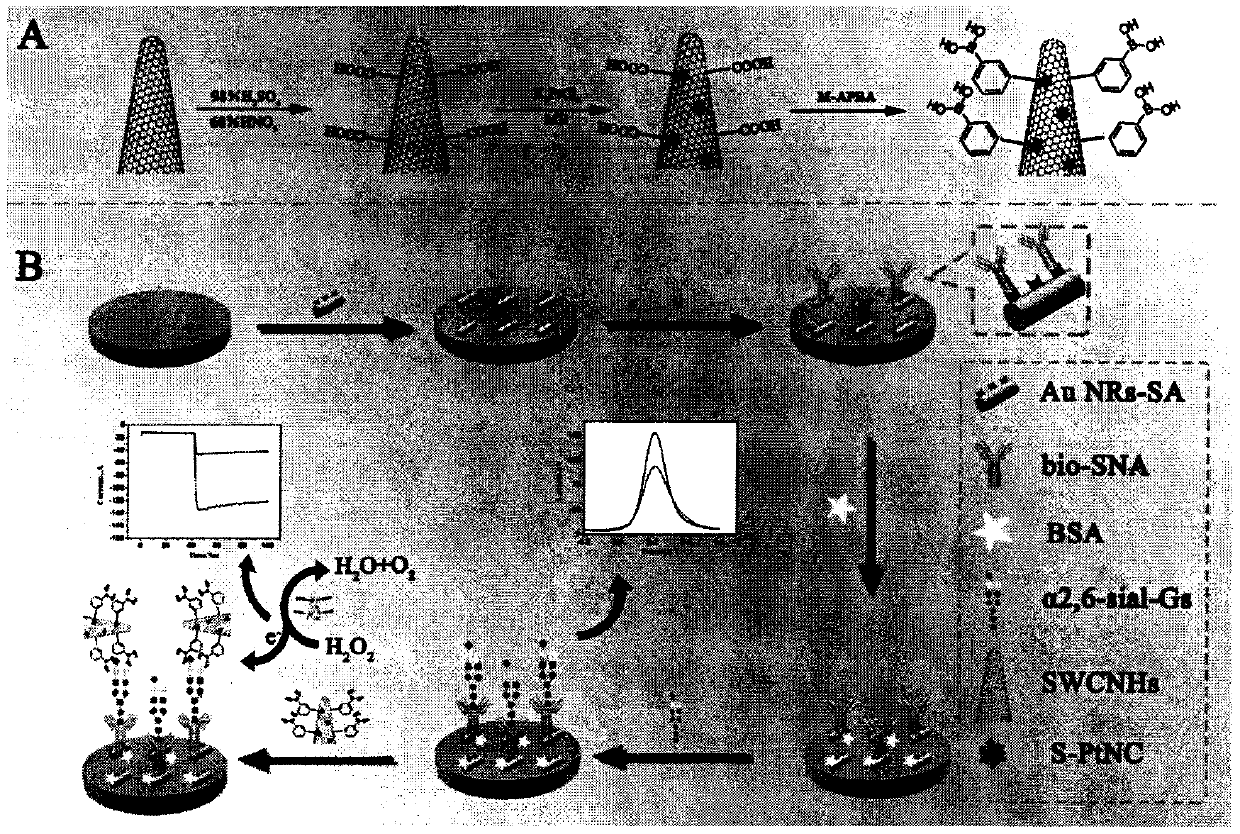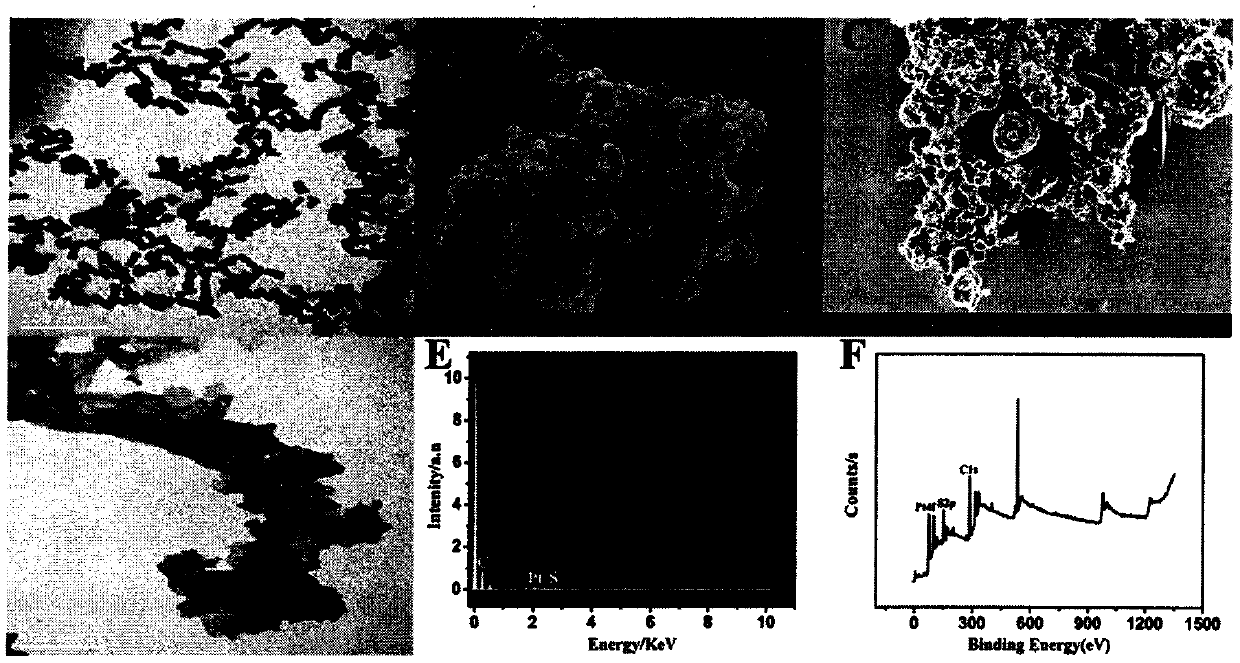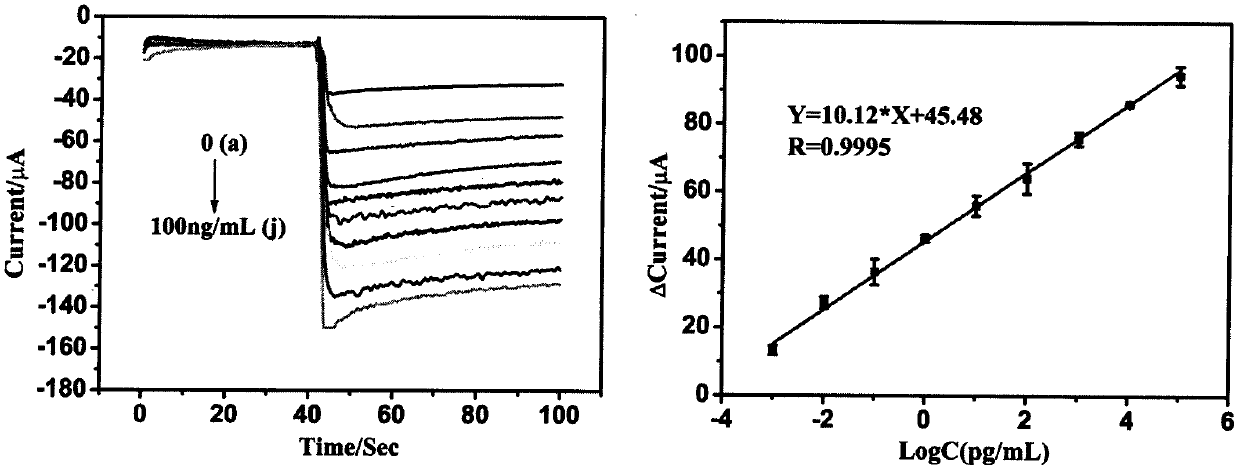Novel electrochemical biological sensor for detecting Alpha2, 6 sialyl gylcan
A biosensor, electrochemical technology, applied in the direction of material electrochemical variables, scientific instruments, instruments, etc., can solve expensive problems, achieve the effect of fewer detection steps, improve sensitivity, and accelerate electron transfer
- Summary
- Abstract
- Description
- Claims
- Application Information
AI Technical Summary
Problems solved by technology
Method used
Image
Examples
Embodiment 1
[0037] Step 1. Dispense 1mL of 2.5mg mL -1 The solution of carboxylated single-walled carbon nanohorns (c-SWCNHs) was sonicated for 5 min; then, 5 mL of potassium chloroplatinate (K 2 PtCl 4 ) and 6 mL of 0.1 mM methylene blue (MB) were heated and stirred at 90° C. for 5 hours. Finally, the mixture was centrifuged at 10,000 rpm for 5 minutes, washed three times, dissolved in 1 mL of ultrapure water, and finally dried in a vacuum oven for use.
[0038] Step 2. Use 0.3 and 0.05 μm Al respectively 2 o 3 Polish the electrode into a mirror surface with powder, then ultrasonically ultrasonicate the electrode for 5 minutes each in the order of ultrapure water, absolute ethanol, and ultrapure water, and dry at room temperature for later use;
[0039] Step 3. Add 10 μL of electrode modification material gold nanorods-streptavidin (AuNRs-SA) dropwise on the electrode surface, and dry at room temperature;
[0040] Step 4. Dissolve 8 μL of bone-synthetic black wood protein (bio-SNA) ...
PUM
 Login to View More
Login to View More Abstract
Description
Claims
Application Information
 Login to View More
Login to View More - R&D
- Intellectual Property
- Life Sciences
- Materials
- Tech Scout
- Unparalleled Data Quality
- Higher Quality Content
- 60% Fewer Hallucinations
Browse by: Latest US Patents, China's latest patents, Technical Efficacy Thesaurus, Application Domain, Technology Topic, Popular Technical Reports.
© 2025 PatSnap. All rights reserved.Legal|Privacy policy|Modern Slavery Act Transparency Statement|Sitemap|About US| Contact US: help@patsnap.com



